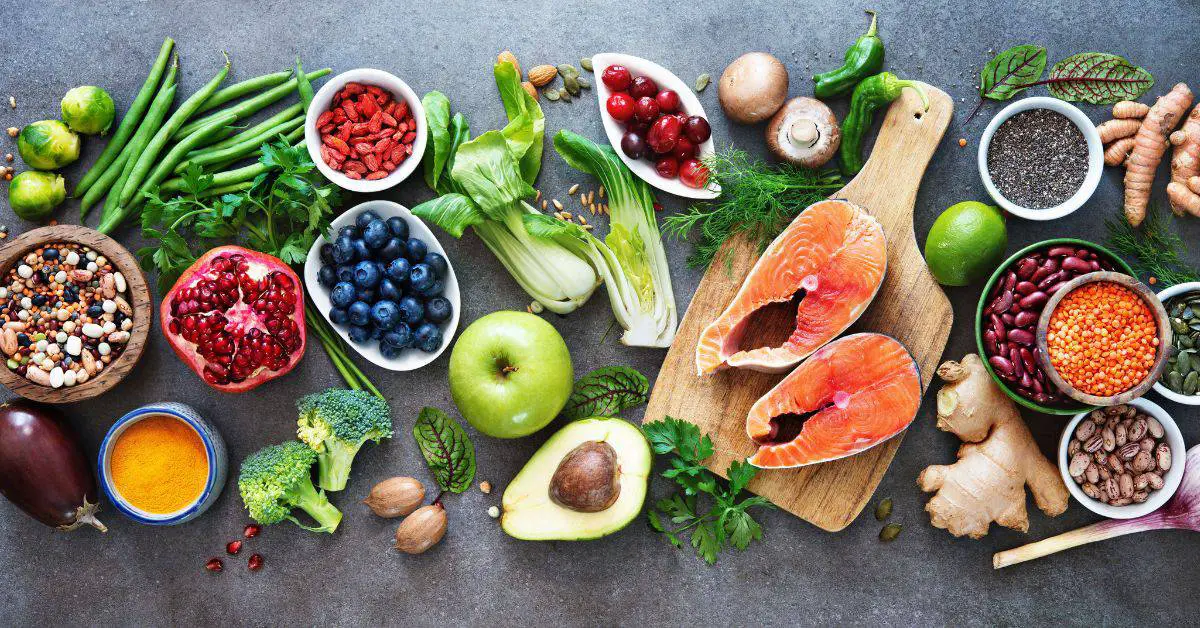Top 90 Foods That’ll Supercharge Your Health
Consuming a diverse range of nutrient-rich foods, such as fruits, vegetables, nuts, seeds, and lean proteins, can significantly benefit your overall health.
It’s natural to question which foods offer the greatest health advantages.
Countless food options are not only healthy but also delicious. By incorporating fruits, vegetables, high-quality protein sources, and other whole foods into your meals, you’ll create dishes that are visually appealing, versatile, and beneficial for your well-being.
Explore these 90 remarkably nutritious foods that offer both health benefits and exceptional taste.
1-6: Fruits & Berries
Fruits and berries rank among the most popular health foods worldwide.
These delicious, nutritious options are easy to incorporate into your diet since they require minimal preparation.
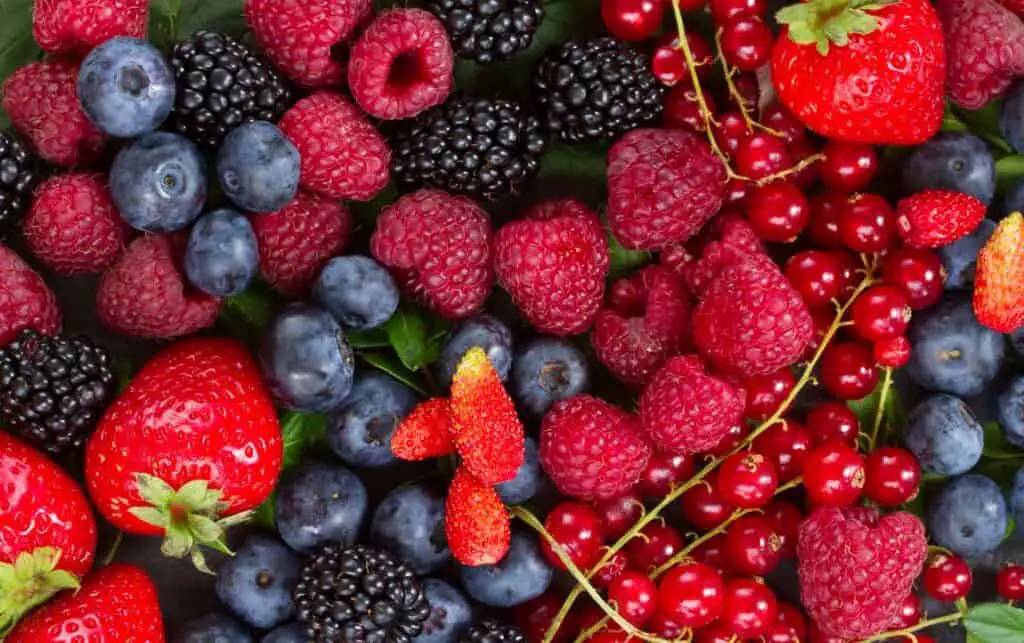
1. Apples
Apples are rich in fiber, vitamin C, and various antioxidants. They are filling, making them an ideal snack for when you’re hungry between meals.
2. Avocados
Unlike most fruits, avocados are high in healthy fats rather than carbohydrates. They are creamy, delicious, and packed with fiber, potassium, and vitamin C.
3. Bananas
Bananas are one of the best sources of potassium. They are also rich in vitamin B6 and fiber, making them a convenient and portable snack.
4. Blueberries
Blueberries are not only tasty but also among the most potent sources of antioxidants globally.
5. Oranges
Oranges are famous for their vitamin C content, and they’re also high in fiber and antioxidants.
6. Strawberries
Strawberries are highly nutritious, low in carbs and calories, and packed with vitamin C, fiber, and manganese. They are arguably one of the most delicious foods available.
Other Healthy Fruits
Additional healthy fruits and berries include cherries, grapes, grapefruit, kiwi, lemons, mangoes, melons, olives, peaches, pears, pineapples, plums, and raspberries.
7. Eggs
Eggs are among the most nutrient-dense foods on Earth.
Previously demonized for their high cholesterol content, new studies have shown that they are safe and healthy.
WISELIVN DAILY
Make your inbox healthier and happier with the latest WiseLivn Media stories, delivered fresh daily. Will be used in accordance with our Privacy Policy.
8-10: Meats
Lean, unprocessed meats can be part of a healthy diet.

8. Lean Beef
Lean beef is an excellent source of protein and highly bioavailable iron when consumed in moderation.
9. Chicken Breasts
Chicken breasts are low in fat and calories but very high in protein. They are a great source of various nutrients. Feel free to eat fattier cuts of chicken if you’re not consuming many carbs.
10. Lamb
Lamb is typically grass-fed, and its meat tends to be high in omega-3 fatty acids.
11. Turkey
Turkey is another lean poultry option that is high in protein and lower in fat compared to other meats. It is a good source of vitamins B3 and B6 and contains minerals like selenium and zinc. Turkey is popular during holidays but can also be enjoyed year-round.
12. Bison
Bison is a lean red meat that is lower in fat and higher in protein compared to regular beef. It is an excellent source of iron, zinc, and vitamin B12 and offers a rich, distinct flavor.
13. Venison
Venison, or deer meat, is a lean and nutrient-dense red meat. It is high in protein, low in fat, and contains essential nutrients like iron, zinc, and vitamins B6 and B12. Venison has a unique gamey taste and can be used in various recipes.
14. Pork Tenderloin
Pork tenderloin is a lean cut of pork that is high in protein and lower in fat compared to other pork cuts. It is a good source of vitamins B1, B6, and B12, as well as minerals like selenium and phosphorus.
15. Rabbit
Rabbit meat is a lean, low-fat, and high-protein option that is rich in vitamins B3 and B12, as well as minerals like selenium and phosphorus. It has a mild flavor and can be used in a variety of recipes as a substitute for other meats.
WISELIVN DAILY
Make your inbox healthier and happier with the latest WiseLivn Media stories, delivered fresh daily. Will be used in accordance with our Privacy Policy.
16-21: Nuts and Seeds
Despite their high fat and calorie content, nuts and seeds may promote weight loss.
These crunchy, filling foods are packed with essential nutrients, such as magnesium and vitamin E, that many people lack. They also require little preparation, making them easy to incorporate into your daily routine.
Some individuals develop nut allergies later in life. If you experience a reaction after consuming any nut, remove it from your diet.
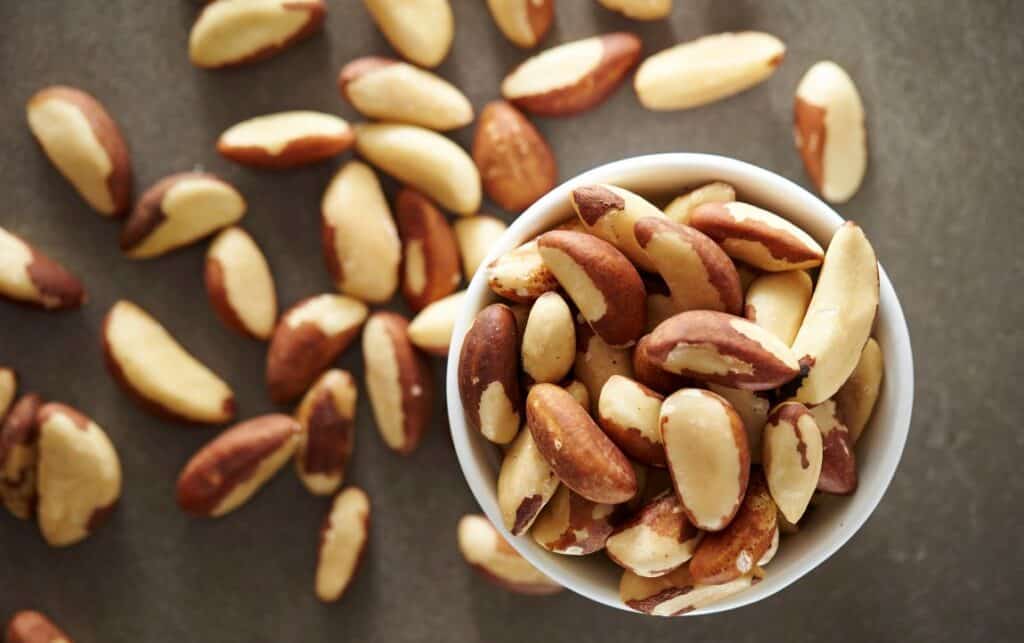
16. Almonds
Almonds are a popular nut rich in vitamin E, antioxidants, magnesium, and fiber. Studies have shown that almonds can contribute to weight loss and improved metabolic health.
17. Chia Seeds
Chia seeds are among the most nutrient-rich foods on Earth. A single ounce (28 grams) contains 11 grams of fiber and significant amounts of magnesium, manganese, calcium, and various other nutrients.
18. Coconuts
Coconuts are packed with fiber and powerful fatty acids called medium-chain triglycerides (MCTs).
19. Macadamia Nuts
Macadamia nuts are incredibly tasty, high in monounsaturated fats, and lower in omega-6 fatty acids than most other nuts.
20. Walnuts
Walnuts are highly nutritious and loaded with fiber, vitamins, and minerals.
21. Brazil Nuts
Brazil nuts have a smooth, buttery texture; are loaded with nutrients; support thyroid function; and are one of the best sources of the essential mineral selenium.
WISELIVN DAILY
Make your inbox healthier and happier with the latest WiseLivn Media stories, delivered fresh daily. Will be used in accordance with our Privacy Policy.
22-31: Vegetables
Vegetables are among the most nutrient-dense foods globally, providing concentrated sources of nutrients per calorie.
A wide variety is available, and it’s best to consume multiple types daily.
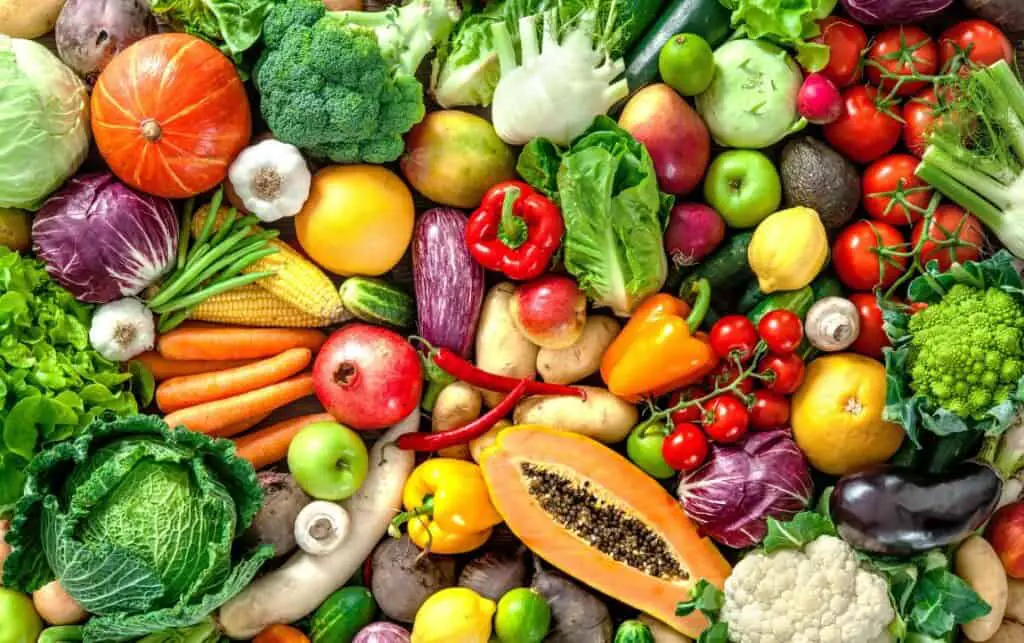
22. Asparagus
Asparagus is a popular vegetable low in carbs and calories but high in vitamin K.
23. Bell Peppers
Bell peppers are available in various colors, including red, yellow, and green. They’re crunchy, sweet, and rich in antioxidants and vitamin C.
24. Broccoli
Broccoli is a cruciferous vegetable that tastes great both raw and cooked. It’s an excellent source of fiber, vitamins C and K, and provides a decent amount of protein compared to other vegetables.
25. Carrots
Carrots are a popular root vegetable, extremely crunchy, and packed with nutrients like fiber and vitamin K.
Carrots are also high in carotene antioxidants, which offer numerous benefits.
26. Cauliflower
Cauliflower is a versatile cruciferous vegetable that can be used in various healthy dishes or enjoyed on its own.
27. Cucumber
Cucumbers are one of the most popular vegetables globally. They’re very low in carbs and calories, consisting mostly of water. However, they do contain small amounts of nutrients, including vitamin K.
28. Garlic
Garlic is incredibly healthy, containing bioactive organosulfur compounds that have powerful biological effects, such as improved immune function.
29. Kale
Kale has gained popularity due to its high fiber, vitamin C, and vitamin K content. It adds a satisfying crunch to salads and other dishes.
30. Onions
Onions have a potent flavor and are widely used in various recipes. They contain numerous bioactive compounds believed to offer health benefits.
31. Tomatoes
Though technically a fruit, tomatoes are often categorized as a vegetable. They are delicious and full of nutrients, such as potassium and vitamin C.
More Healthy Vegetables
Other healthy vegetables include artichokes, Brussels sprouts, cabbage, celery, eggplant, leeks, lettuce, mushrooms, radishes, squash, Swiss chard, turnips, and zucchini.
WISELIVN DAILY
Make your inbox healthier and happier with the latest WiseLivn Media stories, delivered fresh daily. Will be used in accordance with our Privacy Policy.
32-37: Fish & Seafood
Fish and seafood are generally healthy and nutritious, providing essential nutrients such as omega-3 fatty acids and iodine.
People who consume the most seafood, particularly fish, have been shown to live longer and have a lower risk of various illnesses, including heart disease, dementia, and depression.
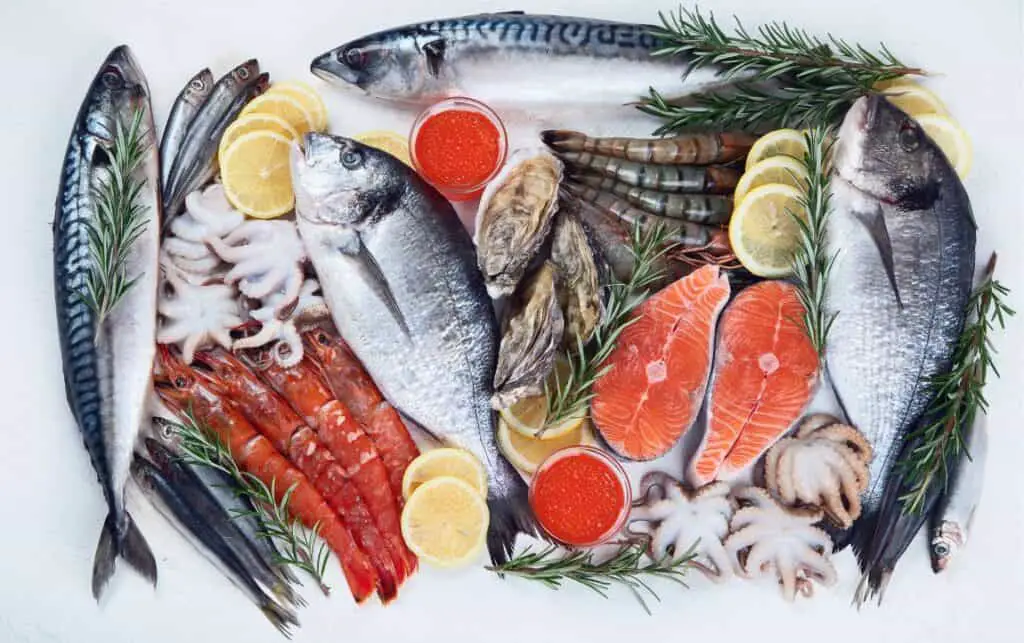
32. Salmon
Salmon is an oily fish known for its delicious taste and high nutrient content, including protein and omega-3 fatty acids. It also contains some vitamin D.
33. Sardines
Sardines are small, oily fish that rank among the most nutritious foods available. They contain significant amounts of most nutrients, including calcium and vitamin D.
34. Shellfish
Shellfish are nutritionally similar to organ meats, offering a wealth of nutrients. Edible shellfish include clams, mollusks, and oysters.
35. Shrimp
Shrimp are crustaceans related to crabs and lobsters. They tend to be low in fat and calories but high in protein, selenium, and vitamin B12.
36. Trout
Trout is a delicious freshwater fish, comparable to salmon.
37. Tuna
Tuna is a popular, low-fat, high-protein fish. It’s ideal for those seeking more protein while keeping calories low. However, opt for low-mercury varieties.
38. Cod
Cod is a lean, white fish that is low in fat and high in protein. It is an excellent source of B vitamins and minerals like iodine, selenium, and phosphorus. Cod is commonly used in dishes like fish and chips or fish tacos.
39. Herring
Herring is an oily fish that is high in omega-3 fatty acids and provides a good amount of protein, vitamins D and B12, and selenium. It can be enjoyed fresh, smoked, or pickled.
40. Anchovies
Anchovies are small, oily fish that are rich in omega-3 fatty acids, calcium, and iron. They have a strong, salty flavor and are commonly used as a topping on pizzas, in salads, or as a flavor enhancer in various dishes.
41. Oysters
Oysters are a type of shellfish that are low in calories and high in protein, zinc, and vitamin B12. They are often consumed raw or cooked and are considered a delicacy in many cuisines. Oysters also have aphrodisiac properties, making them a popular choice for romantic occasions.
WISELIVN DAILY
Make your inbox healthier and happier with the latest WiseLivn Media stories, delivered fresh daily. Will be used in accordance with our Privacy Policy.
42-35: Grains
Whole grains are essential to a healthy diet, providing various micronutrients and fiber. They also serve as a fuel source for the body.
Keep in mind that they are relatively high in carbohydrates, so they may not be suitable for low-carb diets.
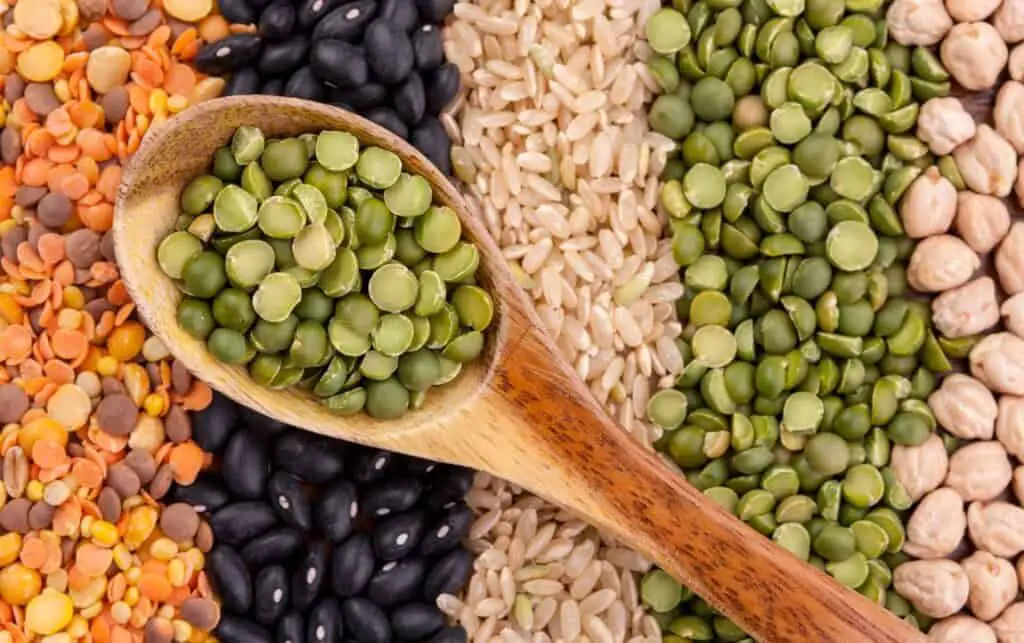
42. Brown Rice
Brown rice is a widely consumed cereal grain, serving as a staple food for over half the global population. It is relatively nutritious, containing fiber, vitamin B1, and magnesium.
43. Oats
Oats are incredibly healthy, rich in nutrients and powerful fibers called beta-glucans, which offer numerous benefits, such as lowering cholesterol and supporting gut health.
44. Quinoa
Quinoa has become increasingly popular among health-conscious individuals. This tasty grain is high in fiber and magnesium and serves as an excellent source of plant-based protein.
45. Barley
Barley is a versatile whole grain that is high in fiber, vitamins, and minerals like selenium and manganese. It can be used in soups, stews, salads, or as a side dish.
46. Bulgur Wheat
Bulgur wheat is a whole grain made from cracked wheat kernels that have been parboiled, dried, and ground. It is high in fiber, protein, and essential nutrients like iron and manganese. Bulgur is commonly used in Middle Eastern dishes like tabbouleh.
47. Millet
Millet is a gluten-free whole grain that is rich in fiber, protein, and essential nutrients like magnesium and manganese. It has a mild, nutty flavor and can be used in porridges, salads, or as a side dish.
48. Farro
Farro, also known as emmer wheat, is an ancient whole grain that is high in fiber, protein, and essential nutrients like magnesium and zinc. It has a chewy texture and nutty flavor, making it a great addition to salads, soups, and risottos.
49. Spelt
Spelt is an ancient whole grain related to wheat that is rich in fiber, protein, and essential nutrients like iron, zinc, and B vitamins. It has a nutty flavor and can be used in place of wheat in many recipes, including bread and pasta.
50. Rye
Rye is a whole grain that is closely related to wheat but has a darker color and stronger flavor. It is high in fiber, vitamins, and minerals like magnesium and phosphorus. Rye is commonly used in European bread, such as pumpernickel.
51. Teff
Teff is a tiny, gluten-free whole grain native to Ethiopia that is high in fiber, protein, and essential nutrients like calcium and iron. It has a mild, earthy flavor and can be used in various dishes, including the traditional Ethiopian flatbread, injera.
WISELIVN DAILY
Make your inbox healthier and happier with the latest WiseLivn Media stories, delivered fresh daily. Will be used in accordance with our Privacy Policy.
51-52: Breads
Many people consume large amounts of highly processed white bread.
When trying to adopt a healthier diet, compare product labels and choose bread with the most dietary fiber and the least added sugar.
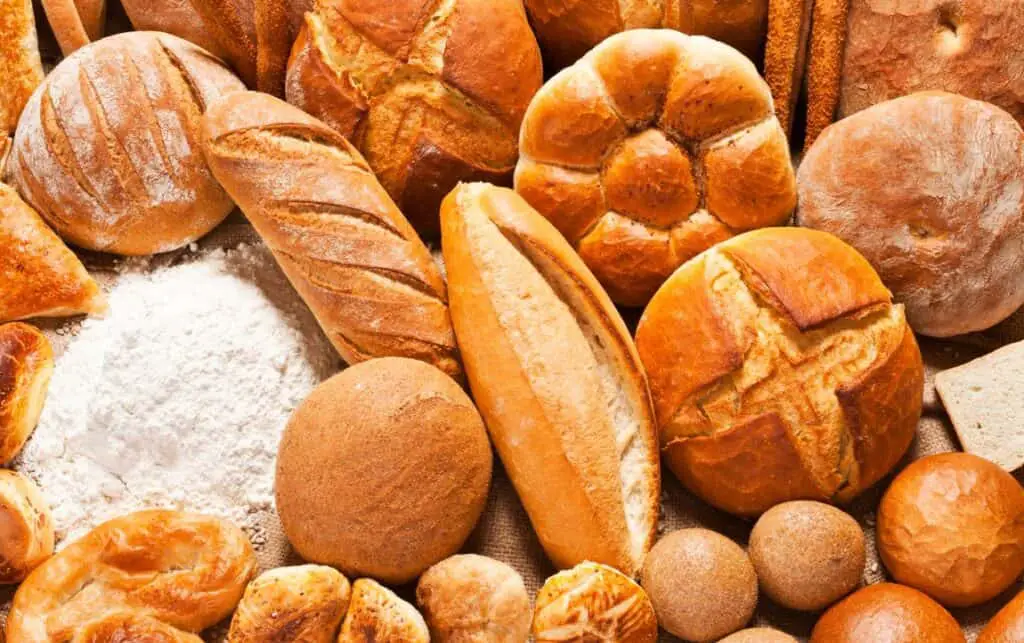
51. Ezekiel Bread
Ezekiel bread may be the healthiest bread available. It’s made from organic sprouted whole grains and several legumes.
52. Homemade Low-Carb Breads
The healthiest bread option might be one you make yourself. Here’s a list of 15 recipes for gluten-free, low-carb breads.
WISELIVN DAILY
Make your inbox healthier and happier with the latest WiseLivn Media stories, delivered fresh daily. Will be used in accordance with our Privacy Policy.
53-63: Legumes
Legumes are an excellent plant-based source of protein, iron, and fiber.
While legumes contain antinutrients that can interfere with digestion and nutrient absorption, soaking, and proper preparation can reduce or eliminate these substances.
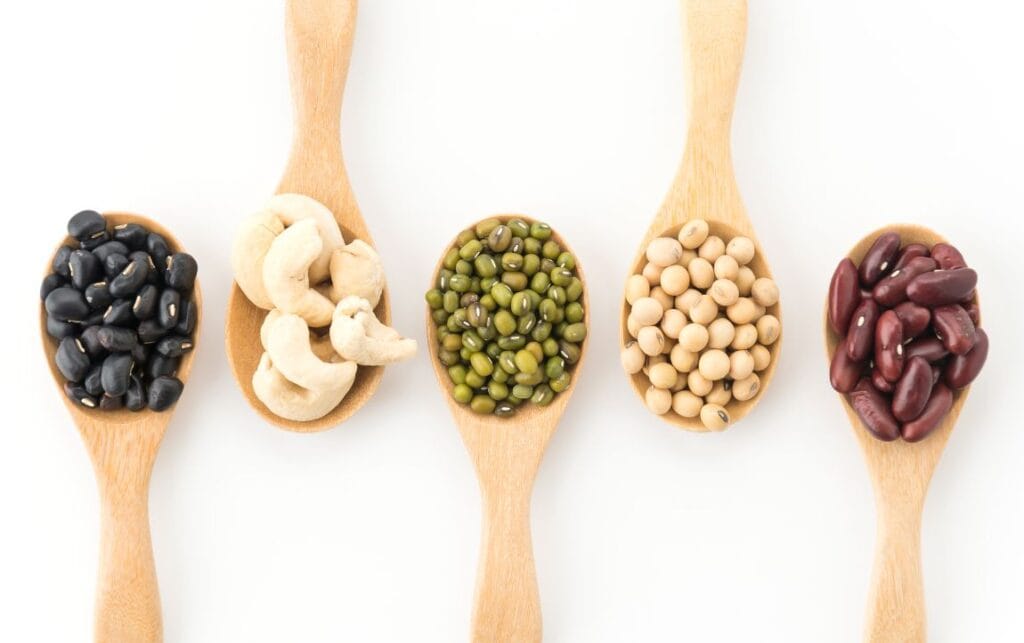
53. Green Beans
Green beans, also known as string beans, are an unripe variety of the common bean. They are widely consumed in Western countries.
54. Kidney Beans
Kidney beans are high in fiber and various vitamins and minerals. Ensure they are adequately cooked, as raw kidney beans can be toxic.
55. Lentils
Lentils are another popular legume, high in fiber and among the best sources of plant-based protein.
56. Peanuts
Peanuts (technically legumes, not true nuts) are tasty and high in nutrients and antioxidants. Some studies suggest that peanuts can help with weight loss.
However, be mindful of peanut butter consumption, as it is high in calories and easy to overeat.
57. Chickpeas (Garbanzo Beans)
Chickpeas are a versatile legume that is rich in protein, fiber, and nutrients like iron, magnesium, and B vitamins.
They can help improve digestion, manage weight, and support heart health. Chickpeas are often used in dishes like hummus or falafel.
58. Black Beans
Black beans are a good source of plant-based protein, fiber, and essential nutrients like iron, magnesium, and folate.
They can help promote digestive health, maintain stable blood sugar levels, and support heart health.
59. Pinto Beans
Pinto beans are a versatile legume that is high in protein, fiber, and essential nutrients like iron, magnesium, and potassium.
They can help support heart health, regulate blood sugar levels, and promote a healthy digestive system.
60. Navy Beans
Navy beans, also known as white beans, are rich in protein, fiber, and essential nutrients like folate, iron, and magnesium.
They can help improve digestion, support heart health, and maintain stable blood sugar levels.
61. Lima Beans
Lima beans, also known as butter beans, are a good source of plant-based protein, fiber, and essential nutrients like potassium, iron, and manganese.
They can help promote digestive health, support heart health, and contribute to overall well-being.
62. Edamame (Soybeans)
Edamame is young, green soybeans that are high in protein, fiber, and essential nutrients like vitamins A and C, iron, and calcium.
They are considered a complete protein, containing all nine essential amino acids, making them an excellent choice for vegetarians and vegans.
63. Mung Beans
Mung beans are small, green legumes that are high in protein, fiber, and essential nutrients like potassium, magnesium, and folate.
They can help improve digestion, regulate blood sugar levels, and support heart health. Mung beans are often used in Asian dishes, such as bean sprouts or sweet desserts.
WISELIVN DAILY
Make your inbox healthier and happier with the latest WiseLivn Media stories, delivered fresh daily. Will be used in accordance with our Privacy Policy.
64-68: Dairy
For those who can tolerate them, dairy products are a healthy source of various essential nutrients.
Full-fat dairy appears to be the most nutritious option. Studies show that people who consume the most full-fat dairy have a lower risk of obesity and type 2 diabetes.
If the dairy comes from grass-fed cows, it may be even more nutritious, as it is higher in some bioactive fatty acids like conjugated linoleic acid and vitamin K2.
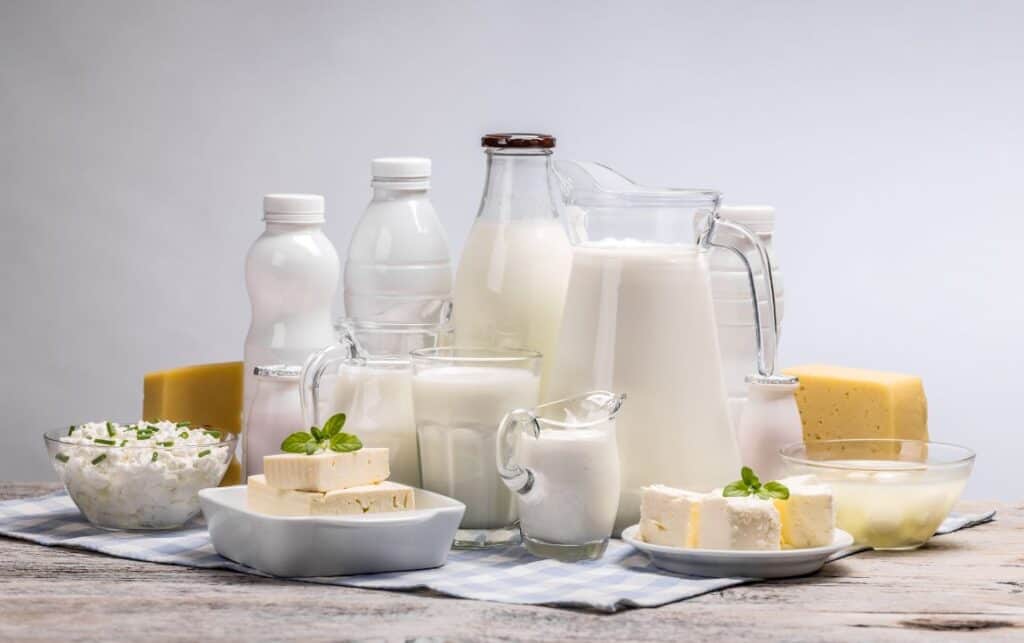
64. Cheese
Cheese is incredibly nutritious. A single slice offers about the same amount of nutrients as an entire cup (240 ml) of milk. Many people also consider it one of the most delicious foods.
65. Whole Milk
Whole milk is very high in vitamins, minerals, quality animal protein, and healthy fats. It is also one of the best dietary sources of calcium.
66. Yogurt
Yogurt is made from milk fermented by the addition of live bacteria. It has many of the same health effects as milk, but yogurt with live cultures provides the added benefit of friendly probiotic bacteria.
67. Kefir
Kefir is a fermented milk drink that is rich in probiotics, calcium, and protein. It supports gut health, strengthens the immune system, and promotes better digestion and nutrient absorption.
68. Unsweetened Almond Milk
While not technically a dairy product, unsweetened almond milk is a popular plant-based alternative that is low in calories and provides essential nutrients like calcium and vitamin D.
It is suitable for those with lactose intolerance or a preference for non-dairy options.
WISELIVN DAILY
Make your inbox healthier and happier with the latest WiseLivn Media stories, delivered fresh daily. Will be used in accordance with our Privacy Policy.
69-78: Fats & Oils
Dietary patterns that include unsaturated fats and oils are considered very healthy.

69. Extra Virgin Olive Oil
Extra virgin olive oil is among the healthiest vegetable oils. It contains heart-healthy monounsaturated fats and is very high in antioxidants.
70. Coconut Oil
Coconut oil is a saturated fat, but it contains MCTs and may have similar health effects to olive oil.
However, coconut oil has been shown to increase LDL (bad) cholesterol to a greater degree than other plant-based liquid oils, so it should be used in moderation.
71. Avocado Oil
Avocado oil is high in monounsaturated fats, vitamin E, and antioxidants.
It has anti-inflammatory properties and can help promote heart health, reduce cholesterol levels, and support overall health.
72. Flaxseed Oil
Flaxseed oil is a plant-based source of omega-3 fatty acids, particularly alpha-linolenic acid (ALA).
It supports heart health, reduces inflammation, and may improve skin health.
73. Chia Seed Oil
Chia seed oil is rich in omega-3 fatty acids, antioxidants, and anti-inflammatory properties.
It promotes heart health, supports brain function, and helps maintain healthy skin and hair.
74. Almond Oil
Almond oil is a good source of monounsaturated fats, vitamin E, and other essential nutrients. It supports heart health, reduces inflammation, and may improve skin health.
75. Walnuts & Walnut Oil
Walnuts and walnut oil are rich in omega-3 fatty acids, antioxidants, and other essential nutrients. They support heart health, brain function, and may help reduce inflammation.
76. Fish Oil
Fish oil is a potent source of omega-3 fatty acids, specifically EPA and DHA. It supports heart health, brain function, and reduces inflammation.
Fish oil supplements are often recommended for those who do not consume enough oily fish in their diet.
77. Canola Oil
Canola oil is a versatile cooking oil that is low in saturated fat and high in monounsaturated fats and omega-3 fatty acids.
It can help support heart health and reduce inflammation when used in moderation.
78. Sunflower Oil
Sunflower oil, specifically high-oleic sunflower oil, is a good source of monounsaturated fats, vitamin E, and other essential nutrients.
It supports heart health, reduces inflammation, and may improve skin health when used in moderation.
WISELIVN DAILY
Make your inbox healthier and happier with the latest WiseLivn Media stories, delivered fresh daily. Will be used in accordance with our Privacy Policy.
78-90: Tubers
Tubers are the storage organs of some plants. They tend to contain a number of beneficial nutrients.
78. Potatoes
Potatoes are packed with potassium and provide a small amount of nearly every essential nutrient, including vitamin C.
They also keep you satiated for extended periods. One study analyzed 38 foods and discovered that boiled potatoes were the most filling.
79. Sweet Potatoes
Sweet potatoes rank among the tastiest starchy foods available. They’re abundant in antioxidants, beta carotene, vitamin A, and various other health-promoting nutrients.
80. Apple Cider Vinegar
Apple cider vinegar may help regulate blood sugar levels after eating when consumed with a meal, although more research is needed to confirm its effectiveness.
It’s an excellent choice for salad dressings or as a flavor enhancer in various dishes.
81. Dark Chocolate Dark
Dark chocolate is rich in magnesium and one of the most potent sources of antioxidants.
82. Yams
Yams are starchy tubers that are rich in fiber, vitamin C, and potassium.
They can help improve digestion, support heart health, and maintain stable blood sugar levels.
83. Turnips
Turnips are a root vegetable high in fiber, vitamin C, and essential minerals like potassium and manganese.
They support digestion, boost the immune system, and promote overall health.
84. Beets
Beets are a colorful tuber that is high in fiber, folate, and essential nutrients like potassium and manganese.
They support liver health, promote healthy blood pressure, and have antioxidant properties.
85. Parsnips
Parsnips are a root vegetable rich in fiber, vitamins C and K, and essential minerals like potassium and manganese.
They support digestion, heart health, and bone health.
86. Rutabagas
Rutabagas, also known as swedes, are a root vegetable high in fiber, vitamin C, and essential minerals like potassium and magnesium.
They support digestion, boost the immune system, and promote overall health.
87. Jerusalem Artichokes
Jerusalem artichokes, also known as sunchokes, are a tuber rich in prebiotic fiber called inulin, which supports gut health.
They are also a good source of potassium, iron, and vitamin C.
88. Jicama
Jicama is a crunchy, slightly sweet tuber that is high in fiber, vitamin C, and essential minerals like potassium and magnesium.
It supports digestion, boosts the immune system, and promotes overall health.
89. Cassava
Cassava, also known as yuca or manioc, is a starchy tuber that is a good source of energy, fiber, and essential nutrients like vitamin C and manganese.
It is a staple food in many tropical regions and can be used in various dishes.
90. Taro
Taro is a starchy tuber that is high in fiber, vitamins B6 and E, and essential minerals like potassium and magnesium.
It supports digestion, heart health, and overall well-being when consumed as part of a balanced diet. Note that taro should always be cooked before consumption to neutralize its naturally occurring toxins.
In Conclusion
Whether you’re looking to transform your diet or simply diversify your meals, incorporating these foods into your daily routine is effortless.
Many of the items listed above not only serve as satisfying snacks but are also loaded with vitamins and antioxidants. Some may even promote weight loss.
If you’re unaccustomed to exploring different flavors and textures, don’t hesitate to try something new.

